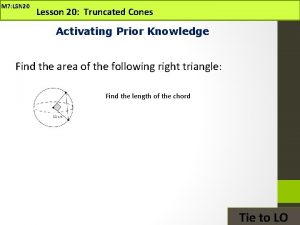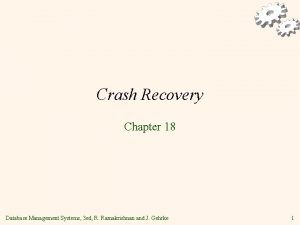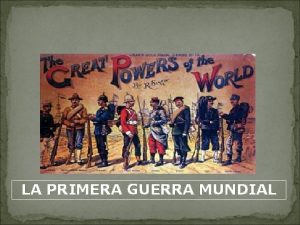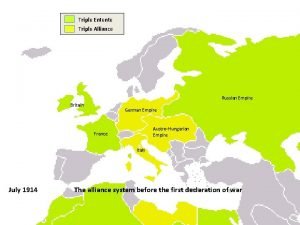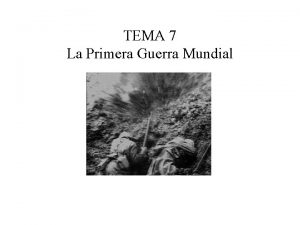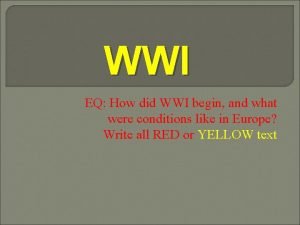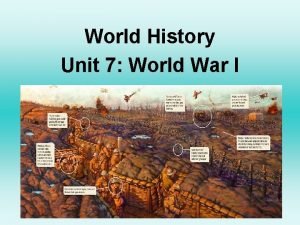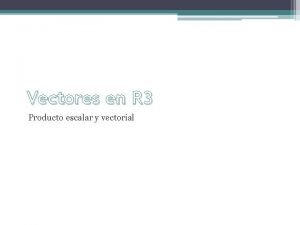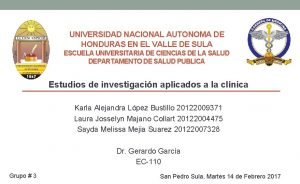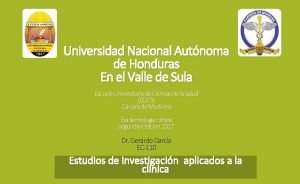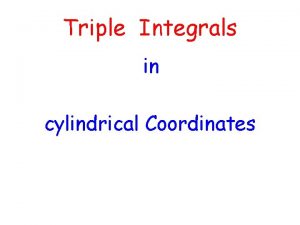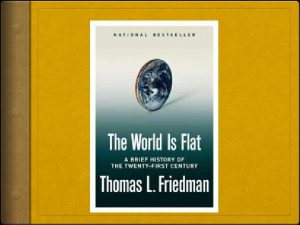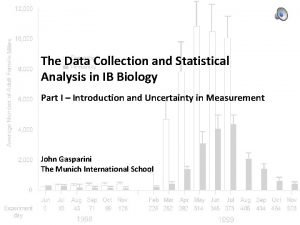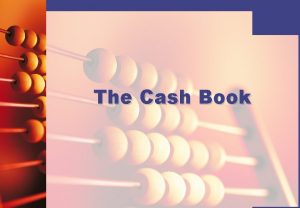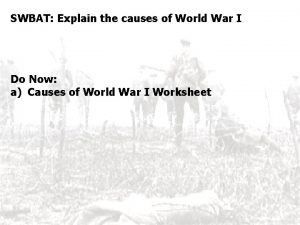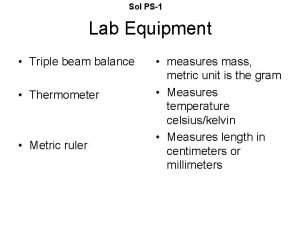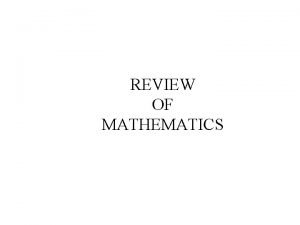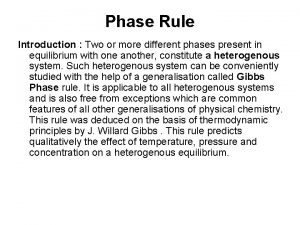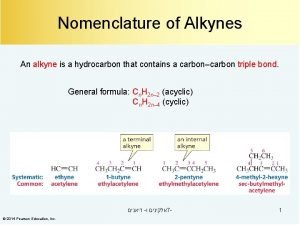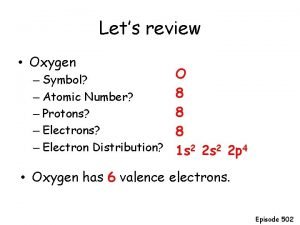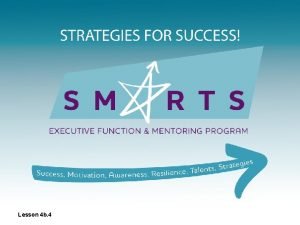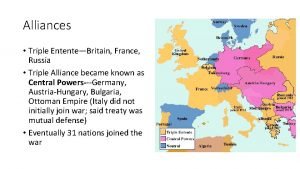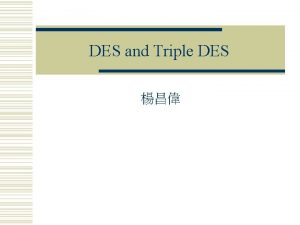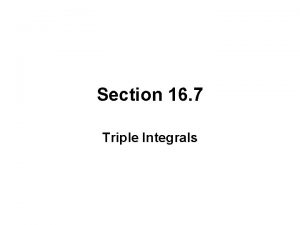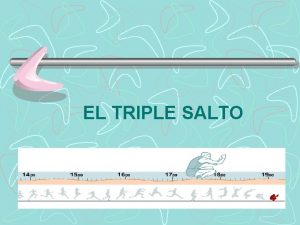Triple Science Support Programme Stockport Science with LSN























































- Slides: 55

Triple Science Support Programme Stockport Science with LSN Support for nonspecialists teaching physics ( Electricity )

Who is this resource for? These materials have been produced to support non specialists teaching topics about aspects of electricity. • They are designed for teachers to use to develop their own understanding and teaching repertoire. They are not intended to be used directly with pupils without adaptation. • There are two main components • Part 1 A self-teaching tool to strengthen © Learning and Skills Network 2007 Slide 2 teachers own understanding of the key principles of electricity • Part 2 A bank of strategies teachers can use to address pupil’s misconceptions

What does the resource contain • There are two main components • Part 1 A self-teaching tool to strengthen teachers own understanding of the key principles of electricity • Part 2 A bank of strategies teachers can use to address pupil’s misconceptions • Two further components support your use of the resource • The quiz is provided to help you to self-assess your own understanding of electricity. • The glossary defines the terms as used throughout the Power. Point

How do I use this resource? • You can navigate between the two main components of this resource by identifying the key concept you wish to explore and using the hyperlinks • In order to use this resource all you need is Power. Point. • If you are downloading the Power. Point you will also need to download the three videos associated with it.

Welcome to the Electricity site This site is designed to help non-Physics specialists to understand electricity better and to address some of the misconceptions of students. Throughout the website you will see these icons, which are designed to help you navigate through the website. Explanation of static electricity Explanation of current electricity Teacher’s Quiz Glossary Addressing misconceptions

GLOSSARY Conductor of electricity A material that has lots of free electrons able to move so allows electricity to pass through it easily (all metals are good conductors and so is graphite. ) Current A measure of the amount of electrons moving in a circuit. Measured in Amps (A). Electron A very small particle orbiting the nucleus of an atom. Free electrons These are electrons not tied to a single nucleus so are free to move in a circuit creating electricity. Insulator of electricity A material that does not have many free electrons able to move so does not allow electricity to pass through it easily (all non-metals, except graphite, are good insulators. ) Neutron An incredibly dense particle with no charge in the nucleus of an atom. Nucleus The central part of the atom containing protons and neutrons. Parallel Circuit A circuit that has more than one path for the electrons to take. Potential difference The "push" in a circuit, measured in Volts (V) and often called voltage. Proton An incredibly dense positively charged particle in the nucleus of an atom. Resistance The ability of a device to prevent electrons moving through it. Measured in Ohms (Ω). Note wires in a circuit are usually assumed to have zero resistance. Series circuit A circuit which has only one path for the electrons to take. Short circuit A path with a low resistance that electricity will go through instead of a device ( short should be easy, because some short circuits are long!!)

Electricity Misconceptions Contents STATIC ELECTRICITY • Moving electrons • Charging metals • Electric Current • Lightning CIRCUITS • Cell or battery? • Longer Wires • Gravity • Position of switch • Bulbs in series • Used up current • Parallel circuits 1 • Parallel circuits 2 • Meters • Why I? • Electron Flow • Voltage and current • Resistance • Short Circuit

Circuits

Cell or Battery. Is there a difference between a cell and a battery ?

Longer Wires. Will a circuit with longer wires take more time to switch on ?

Gravity. Do you get more current flow downhill because of gravity ?

Position of a Switch. Does the position of a switch change how the switch affects the circuit ?

Bulbs in Series. If two bulbs are in series do they light up at the same time when the circuit is switched on ?

Used Up Current. Is current used up as it travels round a circuit ?

Parallel Circuits. -1 Does all the current go down the first arm of the circuit ?

Parallel Circuits. -2 Does the current always split equally between arms of a parallel circuit ? What makes a difference ?

Meters. What do we measure with ammeters and voltmeters ? How do we use ammeters and voltmeters in a circuit ?

Why I ? Why do we use the symbol I for current and not A or C ?

Electron Flow. How do electrons all around the circuit know when to start moving ?

Voltage and Current. What is the difference between voltage and current ? What do they represent ?

Resistance. What is resistance ? What effect does it have on a circuit ?

Short Circuit. Is a short circuit always short in length ?




We can think of current flowing in a circuit as being like water flowing through a pipe. Water in Or like ball bearings in a tube. Water out If we push water in at one end of a pipe it comes out of the other end. It does not get less or disappear. If we push ball bearings into a tube the same number will come out of the other end. They cannot be used up or disappear. The same is true of current in a circuit. The current is a flow of particles called electrons. As they move they carry energy which they can transfer to things like bulbs as they pass through them. They electrons do not get used up but flow all the way around the circuit.

Imagine the tube full of ball bearings again. This time the loop is closed by a box to push the ball bearings (to simulate the power supply). Ball bearings pushed in Ball bearings forced out Gravity Here the loop is pointing down. It should be obvious that gravity has no affect on how the ball bearings move. Similarly if we have the loop pointing up we see that it is just as hard to push in ball bearings and that gravity again does not affect how they move. Electrons in a circuit work in the same way and are not affected by Gravity Ball bearings forced out Ball bearings pushed in

What do bathroom scales measure? You wouldn’t say ‘stones’, ‘pounds’ or ‘kilograms’. You would say …. ‘your weight’. What does the speedometer on a car measure? You wouldn’t say ‘miles per hour’ or ’kilometres per hour’. You would say ‘speed’. In each case you would say what the thing being measured is not the units it is being measured in. The same is true of Voltmeters and Ammeters. A Voltmeter measures Voltage (not volts). An Ammeter measures Current (not amps).

Students need to understand that the whole wire, no matter how long it is, is packed full of electrons. As the power supply ‘pushes’ the electrons next to it, it forces all electrons ahead of it to move as well. Imagine a clear plastic tube full of ball bearings: One pushed in One comes out They all move If you push one ball bearing in then all of the ball bearings in the tube move forward at exactly the same time. In a circuit when the power supply pushes one electron they all move at exactly the same time so the bulb lights up straight away no matter how long the wire is. Similarly if two bulbs are in series then current will start to move through each one at exactly the same time and they will light up at exactly the same time.

Think of a garden hose. When it is turned on the hose is full of water. If you stood on the hose it would create a blockage and water would stop coming out of the end. This is because none of the water after the blockage can feel the pushing force from the tap so it would not move. Water pushed by tap Blockage Nozzle No push felt here The part of the hose before the blockage is full of water. No matter how hard the tap tries it cannot push any more water into that part of the hose. So the water in this part of the hose has stopped moving too. Wire Push from power supply Effect of an open switch Electrons The switch acts in the same way as the blockage in a pipe. The electrons after the switch feel no pushing force from the power supply and do not move. The wire before the switch is full of electrons but these cannot move either as they cannot get past the open switch and have nowhere to go. The result is that a break in any part of the series circuit stops all current from flowing no matter where the break is.

Imagine a system of pipes. One large pipe branches into two, one quite large and one very small. Is an equal amount of water going to be pushed through each one? PUMP Clearly the two pipes here are of different sizes so one pipe will have far more water flowing through it than the other. A similar effect happens in parallel circuits. When faced with a choice of two paths the current splits in two. If each path has the same resistance then the current will split exactly equally. If one path has less resistance than the other, it will be an easier route for the current and (just as for the large pipe above) more current will take it. Less current will be able to flow through the path with the higher resistance.

In the model of the atom there are three types of particle. The positively charged Proton The negatively charged Electron The neutral Neutron The protons and neutrons are contained in the nucleus - deep inside the Atom. The electrons orbit the nucleus and are at the edges of the atom. Static electricity is generated by the force of friction created when two objects are rubbed together. Electrons are physically rubbed off one atom and onto another. Protons are deep inside the nucleus and are unaffected when the objects rub together. So the electron (negative charges) can move from one place to another. The protons (positive charges) never move.

Gravity. Set up the circuit on a circuit board. Close the switch and record the value of the current shown on 6 V A the ammeter. Open the switch and turn the circuit board upside down so that the battery is at the bottom and the light bulb at the top. Ask the students to predict what will happen if the switch is closed now and what the reading on the ammeter will be. Discuss the predictions. Close the switch and record the ammeter reading now. Compare it to the predictions and discuss the result.

Longer Wires. Set up two circuits as a demonstration, 6 V one with short wires and one with long wires. The shorter wired circuit could be set up at the front of the room all on one desk. The longer wired circuit could have the power supply and switch at the front of the room and the light bulb at the back. Ask the students to predict what will happen in each circuit when the switch is closed and to compare them. Discuss these predictions before switching each circuit on individually and than both at the same time. Discuss the actual results and compare them to the predictions made before the experiment. 6 V

Used up Current. This practical can either be done as a student activity or as a demonstration. 3 6 V 1 Ask the students to predict the current at positions 1, 2 and 3 when the switch is closed. 2 Either : a) Ask the students to set up the circuit and using an ammeter measure the current at each of points 1, 2 and 3 in the circuit when the switch is closed. ( Remind the students that after each test the circuit should be completed again then an ammeter put in place by breaking the circuit. ) Or : b) Make the circuit placing an ammeter in each of the placed labelled 1, 2 and 3. Read and record the values on the ammeters. Compare the actual results to the predictions made at the start of the activity. Explain the results.

Position of Switch. Ask the students to set up the first circuit. 6 V They should record what happens when they close the switch. Ask the students to predict what will happen if the second circuit is built and the switch closed. 6 V Discuss the predictions and then try the circuit. Now repeat the procedure for the third circuit. Discuss the results with the group. 6 V

Parallel Circuits 1 Ask the students to set up the circuit after first predicting what will be the current reading in each arm of the parallel circuit. The circuit can then be used to see if their predictions were correct. ( If there are not enough ammeters available then either this activity can be completed as a class participation demonstration or one ammeter can be us 3 ed moved to each position in turn. ) 6 V A A A

Parallel Circuits 2 Ask the students to predict what will be the current value for each of the ammeters in the circuit. 6 V Set up the circuit and measure the current. A Do the values match up with the predictions ? Discuss the results. 10 W A

Voltage and Current 6 V Using the circuit shown the students can see what happens to the current through and voltage across a bulb when the resistance in a circuit is changed. Once all the students have taken a series of readings discuss the results stressing where the voltmeter is always placed ( in parallel with the component of interest ) and the ammeter ( in series with the component of interest ). A 25 W V

Resistance Either carry out this practical activity as a class participation demonstration or as a practical where the students try the circuit and record the values of the current. 6 V A After completion ask the students to draw conclusion and try to explain what resistance does in the circuit. 10 W A 15 W A 20 W A

Short Circuit 6 V Ask the students to try the simple circuit ( drawn in black ). 2 Record the current. Now add the blue short circuit ( 1 ). Record the current. Now do the same for the orange short circuit ( 2 ). Does the length of the short circuit have any effect ? 1 A

Students say : Metals can’t be charged because they are conductors. Teachers say : Charging by friction can only occur with insulators as the charges created stay where they are. However metals can be charged if electrons are deposited on a metal surface or taken from a metal surface. The electrons on the metal will spread out over all the surface as the metal is a conductor allowing the electrons to move. If the process continues and more electrons are added or removed from the metal then a considerable charge can be built up, e. g. . A Van De Graaf Generator.

Students say : If a switch is in the circuit before the light bulb then the bulb will not light if the switch is open If the switch is in the circuit after the light bulb then the bulb will be on even if the switch is open. 6 V In the first circuit, as the switch comes before the light bulb when moving from the positive side of the power supply, the light bulb will not be on as the switch stops the current from reaching the light bulb. 6 V By the same rules, in the second diagram the bulb will be on as the current will flow through the bulb before the switch stops it. Teachers say : This is not true. As soon as a voltage (potential difference or p. d. ) is applied to the circuit by closing the switch all the electrons start to move. This means that the light bulb will come on.

Students say : A bulb connected by longer wires to a battery will take longer to light up when the circuit is switched on. Teachers say : As soon as a potential difference ( p. d. or voltage ) is applied to a circuit all the electrons start to move. This means that no matter how far the bulb is from the power supply it will light up immediately when the switch is closed (ON).

Students say : In the circuit on the board with the battery at the top gravity will make more current flow downhill. The circuit with the battery on the bottom will have less current flowing uphill. 6 V When drawn on the board some students think that the first circuit will have more current flow because the battery is at the top and gravity will push the current downhill. The second circuit will, by the same rules, have less current flow because gravity will stop the current flowing uphill. 6 V Teachers say : This is untrue as the electron flow, known as current, is created by the voltage ( potential difference or p. d. ) applied and is not affected by gravity.

Students say : All the power supplies in a circuit are ‘batteries’ ( even though they are sometimes cells ). Teachers say : Cells are single units of either 1. 5 V or 2 V. 1. 5 V 2 V Batteries are more than one cell connected together. In series these form batteries of 3 V, 4. 5 V, 6 V etc. or 4 V, 6 V, 8 V. . or 3 V or 4 V , 3 V or 4 V etc. . 4. 5 V or 6 V In parallel they form batteries of 1. 5 V or 2 V that will last 2 or three times longer before they are ‘flat’. This battery will last twice as long as a single cell before needing to be replaced, etc. . 1. 5 V or 2 v

Students say : The first bulb from the switch will come on first followed by the next bulb and so on. When the switch is closed the electric current will flow from the positive terminal of the battery. It reaches the light bulb on the right first so this comes on first 6 V followed by the middle light bulb and finally the light bulb on the left. Teachers say : This is not true. As soon as a potential difference ( p. d. or voltage ) is applied to the circuit by closing the switch all the electrons start to move. This means that all of the light bulb will come on immediately.

Students say : As the current goes around a circuit the current will be used up. When the switch is closed electric current makes the light bulb go on. Electric current will be used up as it travels around the circuit lighting up the light bulbs. 6 V Teachers say : This is not true. The electric current stays the same all around the circuit. It is energy that is used up that is carried around the circuit from the power supply to the light bulbs. This is the reason that the batteries become flat (discharged) after use for a period of time in a circuit.

Students say : In a parallel circuit all the current will go down the first arm of the circuit it comes to. Teachers say : The flow of current in a circuit will follow a current path depending on how easy it is to go down that path. If there is more than one current path available, each of equal ease to flow down, then the current flow will be shared out equally.

Students say : In a parallel circuit most of the current will flow down the first arm of the circuit it comes to, a smaller amount travelling further to the next arm, etc. . . Teachers say : The flow of current in a circuit will follow a current path depending on how easy it is to go down that path. If there is more than one current path available, each of equal ease to flow down, then the current flow will be shared out equally. If one current path flows through a larger resistance then less current will flow down that path and vice versa.

Students say : We connect all meters into the circuit to measure either current or voltage. Teachers say : An ammeter measure the amount of current flow in amperes ( shortened to amps ). To use an ammeter correctly we have to break the circuit so that the current flows through the ammeter as well as the component, i. e. . we measure the current through a component. 6 V A voltmeter measures the voltage ( potential difference or p. d. ) across a component. To use a voltmeter correctly we have to connect it around ( or across ) the component we are interested in, i. e. . we measure the voltage across a component. V

Students say : How do electrons know to start moving all round the circuit when you close the switch ? Teachers say : The electrons move around the circuit in conductors where there are ‘free’ electrons. In order for electrons to move there has to be space to move into. This is created by other electrons moving all around the complete circuit. This means that as you close the switch free electrons start to move all around the circuit at the same time. The direction of the electron flow is opposite to the direction of the electric current. This is because the electrons are negatively charged and were discovered after electric current had been discovered and described as going from a positive potential to a negative potential.

Students say : The voltage flowing in the circuit is making the lamp light up. Teachers say : The voltage can be referred to as ‘current pushing power’. When it is applied across a circuit then current flows. It is the current that moves through the circuit and the voltage ( potential difference or p. d. ) that causes the current flow.

Students say : Resistance stops current from flowing. Teachers say : Resistance only controls the amount of current that can flow. The larger the resistance the less current will flow if the same voltage is applied and vice versa. This why you get more electric current down a parallel arm of a circuit with larger resistance than one with a lower resistance. A switch is effectively a resistance with two values, zero when it is closed and infinity when it is open.

Students say : A short circuit is a small piece of wire connected across a circuit that stops it working. Teachers say : The short circuit can be any length. The only condition is that it needs to be of a lower resistance, usually very low, than the resistance of the component across which it is connected ( shorting out ). A short circuit will quite often get very hot as it allowing a very high current to flow ( low resistance ).
 Stockport behaviour support service
Stockport behaviour support service Stockport academy uniform
Stockport academy uniform Lsn soccer
Lsn soccer Lesson 20 truncated cones
Lesson 20 truncated cones Lsn in dbms
Lsn in dbms Triple entente vs triple alliance
Triple entente vs triple alliance Triple alianza y triple entente
Triple alianza y triple entente Triple alliance ww1
Triple alliance ww1 Triple entente countries
Triple entente countries Conclusiones de la segunda guerra mundial
Conclusiones de la segunda guerra mundial Principle of remedial teaching
Principle of remedial teaching Benazir bhutto income support programme watan card
Benazir bhutto income support programme watan card Peer sexuality support programme
Peer sexuality support programme Triple beam balance definition science
Triple beam balance definition science Signal words
Signal words What is your favorite subject ?
What is your favorite subject ? When did wwi begin and end
When did wwi begin and end Triple entent
Triple entent Which three nations belonged to the triple entente
Which three nations belonged to the triple entente Triple entente countries in world war 1
Triple entente countries in world war 1 Homonym of plane
Homonym of plane Profucto escalar
Profucto escalar Officiating track and field
Officiating track and field Estudio descriptivo y analitico
Estudio descriptivo y analitico Triple ciego
Triple ciego Subjekt predikat objekt
Subjekt predikat objekt Triple rhomboid flap
Triple rhomboid flap Histamine triple response
Histamine triple response Triple jump doo
Triple jump doo Triple integral cylindrical coordinates
Triple integral cylindrical coordinates Triple convergence
Triple convergence Tubesheet heat exchanger
Tubesheet heat exchanger Triple beam balance uncertainty
Triple beam balance uncertainty 3 column cash book format
3 column cash book format Triple entente countries
Triple entente countries Triple risk model sids
Triple risk model sids Triple risk model sids
Triple risk model sids Triple blind study
Triple blind study Triple beam balance definition
Triple beam balance definition Mio test results
Mio test results Triple risk model sids
Triple risk model sids Queen post
Queen post Vector triple product
Vector triple product Renaissance triple set
Renaissance triple set Rodney grubb obituary
Rodney grubb obituary Julie fitzwilliam
Julie fitzwilliam Phase rule
Phase rule Anatomy and physiology of peptic ulcer ppt
Anatomy and physiology of peptic ulcer ppt Triple therapy for peptic ulcer disease
Triple therapy for peptic ulcer disease Naming alkynes
Naming alkynes Transicion mutacion
Transicion mutacion Lysine iron agar test
Lysine iron agar test Measurement of triple jump
Measurement of triple jump C2h4 valence electrons
C2h4 valence electrons Triple note tote
Triple note tote Modèle du triple code
Modèle du triple code



